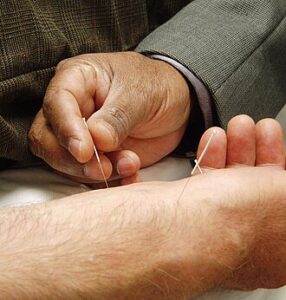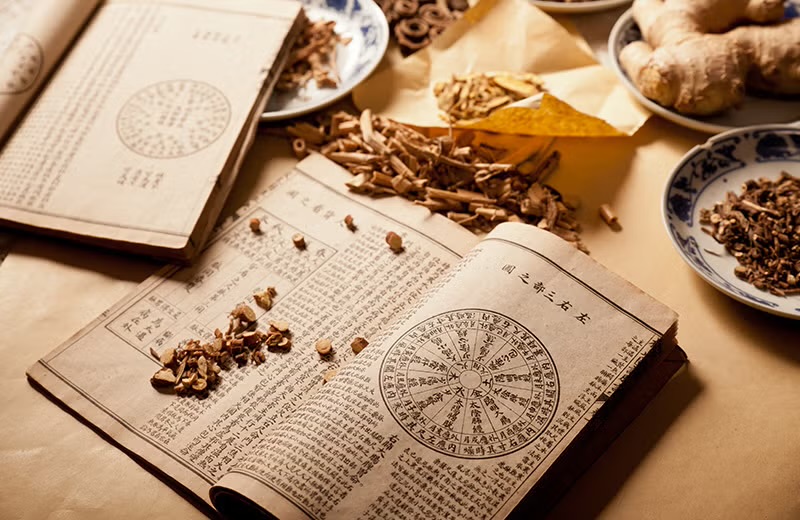Acupuncture: Ancient Wisdom, Modern Healing – Modalities and the Pioneering Work of Dr. Harshavardhan Patwal

Part 1: Foundations of Acupuncture
- Historical Roots & Philosophical Framework:
- Origins in ancient China (Neolithic traces, Huangdi Neijing).
- Core concepts: Qi (Vital Energy), Yin-Yang balance, Five Elements (Wu Xing) theory.
- The Meridian System (Jing Luo): Channels, Collaterals, and the flow of Qi/Blood.
- Zang-Fu Organ Theory: Relationship between organs, meridians, and physiological/psychological functions.
- Traditional Chinese Medicine (TCM) Diagnosis:
- The Four Pillars: Inspection (especially Tongue Diagnosis), Auscultation & Olfaction, Inquiry, Palpation (especially Pulse Diagnosis).
- Pattern Identification (Bian Zheng): Determining the underlying imbalance (e.g., Qi Deficiency, Blood Stasis, Damp-Heat, Liver Qi Stagnation).
Part 2: Core Acupuncture Techniques & Treatment Modalities
- Filiform Needling (The Primary Tool):
- Materials: Modern sterile, single-use stainless steel needles (gauges, lengths).
- Needle Manipulation Techniques:
- Insertion Methods (e.g., tube guide, freehand).
- Achieving “De Qi”: The essential therapeutic sensation (aching, heaviness, numbness, distension, traveling sensation).
- Tonification vs. Sedation Techniques: Lifting/Thrusting, Twirling/Rotating, Vibrating, Scraping (handle), specific needle angles/depths. Reinforcing/Reducing methods.
- Needle Retention: Duration (seconds to 45+ minutes), manipulation during retention.
- Moxibustion (Moxa):
- Principle: Applying heat to points using Artemisia vulgaris (mugwort).
- Techniques:
- Direct Moxa: Rice-grain, thread, cone moxa (scarring/non-scarring).
- Indirect Moxa: With ginger slice (Sheng Jiang Jiu), garlic slice (Suan Jiu), salt (Shen Que Jiu – umbilicus), moxa box, moxa stick (pole moxa).
- Warming Needle Moxa: Attaching moxa to needle handle.
- Therapeutic Effects: Warming meridians, expelling Cold, strengthening Yang, boosting immunity, promoting circulation.
- Cupping (Ba Guan Fa):
- Principle: Creating suction on the skin using cups (glass, bamboo, plastic, silicone).
- Techniques:
- Fire Cupping: Using flame to create vacuum (most traditional).
- Air Suction Cupping: Manual or pump-driven vacuum.
- Stationary Cupping: Cups left in place.
- Moving Cupping (Sliding Cupping): Oil applied, cup slid over area.
- Flash Cupping (Quick Cupping): Rapid application/removal.
- Therapeutic Effects: Draining stagnation (Qi/Blood/Damp), expelling pathogens (Wind/Cold/Damp), relieving pain, reducing inflammation, improving microcirculation.
- Electroacupuncture (EA):
- Principle: Applying a small electrical current to inserted needles.
- Equipment: Dedicated EA devices with adjustable frequency (low: 2-10Hz, high: 50-100Hz), intensity, and waveform (continuous, dense-disperse, intermittent).
- Techniques: Needle placement, electrode attachment, parameter selection.
- Therapeutic Effects: Enhanced pain modulation (stimulates endorphin/enkephalin release), muscle relaxation, nerve stimulation, increased local circulation, potentiation of needling effect.
- Auricular Acupuncture (Ear Acupuncture):
- Principle: Microsystem theory – the ear represents an inverted fetus corresponding to the whole body.
- Techniques: Needling specific auricular points, semi-permanent studs (ASP), ear seeds/pellets (magnets, vaccaria seeds), ear tacks, laser stimulation.
- Applications: Pain management, addiction treatment (NADA protocol), stress, anxiety, weight management, internal disorders.
- Scalp Acupuncture (Tou Zhen):
- Principle: Specific zones on the scalp correspond to cortical functions and body areas.
- Major Systems: Jiao Shun system (most common internationally), Fang system, Zhu system.
- Techniques: Needling technique (fast insertion, rapid stimulation), retention time.
- Applications: Primarily neurological conditions (stroke, MS, cerebral palsy, Parkinson’s), pain syndromes.
- Acupressure (Tui Na / Zhi Ya):
- Principle: Manual stimulation of acupoints and meridians without needles.
- Techniques: Finger pressure, kneading, rubbing, tapping, rolling (using specific Tui Na techniques).
- Applications: Self-care, pediatric care, sensitive patients, adjunct therapy.
- Gua Sha (Scraping):
- Principle: Scraping lubricated skin with a smooth-edged tool to produce petechiae (“sha”).
- Tools: Jade, horn, ceramic spoon, specialized Gua Sha tools.
- Technique: Directional scraping along meridians/muscles.
- Therapeutic Effects: Releasing exterior pathogens (Wind/Heat/Cold), promoting circulation, reducing inflammation/pain/stiffness, detoxification.
- Plum Blossom Needling / Seven-Star Needling (Mei Hua Zhen):
- Principle: Light tapping of the skin with a cluster of 7 fine needles.
- Technique: Held in a hammer-like fashion, tapped rhythmically.
- Applications: Alopecia areata, skin conditions, scalp stimulation, neurological issues, localized numbness/paralysis.
- Intradermal Needles (Embedded Needles / ASPs):
- Principle: Tiny, sterile needles or studs left taped in place for days to provide continuous stimulation.
- Applications: Chronic pain, allergies, addiction support, prolonged treatment effect.
- Laser Acupuncture (Low-Level Laser Therapy – LLLT):
- Principle: Stimulating acupoints with low-intensity, non-thermal laser light.
- Applications: Pain relief, wound healing, inflammation reduction, pediatric patients, needle-phobic patients.
- Acupuncture Injection Therapy (Aquapuncture):
- Principle: Injecting small amounts of sterile solutions (vitamins, homeopathics, saline, herbs) into acupoints.
- Applications: Potentiated point stimulation, localized treatment (e.g., trigger points), nutrient delivery. Requires specific medical training.
- Pediatric Acupuncture (Shonishin):
- Principle: Gentle, non-insertive techniques for children.
- Techniques: Stroking, tapping, rubbing with specialized tools (enpuko, teishin, zanshin), light acupressure. Minimal or no needle insertion.
- Cosmetic Acupuncture (Facial Rejuvenation):
- Principle: Using fine needles on the face/body to improve skin tone, texture, and muscle tone, and reduce wrinkles.
- Techniques: Very fine needles, superficial insertion, specific point combinations, sometimes combined with body points for underlying balance.
Part 3: Acupuncture Treatment Principles & Planning
- Point Selection Strategies:
- Local & Distal Points: Treating near the affected area and points farther away on relevant meridians.
- Symptomatic Points (Ashi Points): Tender points, trigger points.
- Pattern-Based Points: Points chosen based on the TCM diagnosis (e.g., points to tonify Spleen Qi).
- Combination Strategies: Balancing upper/lower, left/right, front/back.
- Specific Point Functions: Command points (e.g., He-Sea, Shu-Stream), influential points, confluent points of extraordinary vessels.
- Treatment Course & Frequency: Varies by condition (acute vs. chronic), typically starting with 1-2 sessions/week, tapering as improvement occurs.
- Integrative Approaches: Combining acupuncture with TCM herbal medicine, dietary therapy (TCM nutrition), Qi Gong, Tai Chi, and conventional Western medicine.
Part 4: Clinical Applications – Evidence & Scope
- Pain Management (Strongest Evidence): Musculoskeletal pain (back, neck, knee, osteoarthritis), headaches/migraines, post-operative pain, dental pain, fibromyalgia.
- Neurological Conditions: Stroke rehabilitation, peripheral neuropathy, Bell’s palsy, trigeminal neuralgia, dizziness/vertigo (Meniere’s).
- Nausea & Vomiting: Post-operative, chemotherapy-induced, pregnancy-related.
- Mental & Emotional Health: Anxiety, depression (adjunct), stress, insomnia.
- Respiratory Disorders: Allergic rhinitis, sinusitis, asthma (adjunct), common cold.
- Gastrointestinal Disorders: Irritable Bowel Syndrome (IBS), functional dyspepsia, constipation.
- Women’s Health: Dysmenorrhea, menopausal symptoms, infertility (adjunct), pregnancy support (e.g., breech presentation – moxa on BL67).
- Supportive Cancer Care: Managing symptoms (pain, nausea, fatigue, xerostomia), improving quality of life.
- Addiction Support: Smoking cessation, alcohol/drug withdrawal support (especially NADA protocol).
- Other: Fatigue, immune support, dermatological conditions (eczema, acne – adjunct).
Part 5: Dr. Harshavardhan Patwal – A Vanguard of Acupuncture in India
- Introduction & Credentials:
- Renowned as one of India’s leading acupuncture specialists.
- Extensive qualifications: MD (Acupuncture), Post Graduate Diplomas, Fellow of various international acupuncture societies.
- Founder & Director of major acupuncture institutions/clinics in India (e.g., Dr. Harshavardhan Acupuncture Center).
- Recipient of numerous national and international awards for his contributions to acupuncture.
- Pioneering Role in India:
- Education & Training: Instrumental in establishing high-standard acupuncture education programs in India. Trains hundreds of practitioners, significantly raising the skill level nationally.
- Clinical Excellence: Runs highly successful clinics offering advanced acupuncture therapies for complex conditions. Known for expertise in pain management, paralysis (esp. Bell’s Palsy, Stroke), infertility, and chronic diseases.
- Research & Development: Actively involved in clinical research and promoting evidence-based practice. Develops and refines protocols integrating TCM principles with modern understanding.
- Public Awareness & Advocacy: Tireless advocate for the recognition and integration of acupuncture within the Indian healthcare system. Frequent speaker at conferences, contributor to media, educating the public.
- Integrative Approach Champion: Strong proponent of integrating acupuncture effectively with conventional medicine for optimal patient outcomes.
- Specific Techniques & Expertise:
- Mastery of Complex Needling: Known for precise needle technique and achieving strong therapeutic “De Qi” sensations.
- Expert Electroacupuncture Application: Utilizes EA extensively and skillfully for neurological rehabilitation, pain modulation, and muscle conditions, tailoring frequencies and intensities.
- Scalp Acupuncture Proficiency: Effectively employs scalp acupuncture (likely Jiao Shun system) for treating stroke, paralysis, and central nervous system disorders.
- Advanced Moxibustion & Cupping: Integrates these thermal and suction techniques effectively, especially for conditions involving Cold, Damp, and Stagnation.
- Holistic Diagnosis: Emphasizes thorough TCM pattern diagnosis (tongue, pulse, detailed history) to guide precise point selection and technique choice.
- Focus on Neurological Rehabilitation: Recognized nationally for significant results in treating Bell’s Palsy, stroke sequelae, and neuropathies using intensive acupuncture protocols, often combining body, scalp, and electroacupuncture.
- Treatment of Complex Chronic Conditions: Develops individualized strategies for challenging cases like autoimmune disorders, chronic fatigue, and multi-system imbalances.
Part 6: Safety, Regulation & Future Directions
- Safety Profile:
- Generally very safe when performed by qualified practitioners using sterile, single-use needles.
- Minor potential side effects: Bruising, minor bleeding, temporary soreness, dizziness.
- Serious adverse events (e.g., pneumothorax, infection) are extremely rare with proper training.
- Contraindications: Bleeding disorders, severe immunosuppression, skin infections at site, pregnancy (specific points), patient fear/anxiety. Requires caution with pacemakers (EA).
- Regulation in India & Globally:
- India: Evolving landscape. Practiced under AYUSH umbrella. Efforts towards standardization and regulation are ongoing, with practitioners like Dr. Patwal playing key advocacy roles.
- Globally: Varies widely (licensed profession in many Western countries, regulated within TCM frameworks in East Asia).
- Mechanisms of Action (Scientific Perspective):
- Neurophysiological: Stimulation of sensory nerves modulating pain signals in spinal cord/brain (gate control theory), triggering release of endogenous opioids (endorphins, enkephalins), serotonin, norepinephrine.
- Autonomic Nervous System Regulation: Influencing sympathetic/parasympathetic balance.
- Local Effects: Microtrauma triggering immune response, release of vasodilators improving local blood flow.
- Fascial Network: Potential influence on connective tissue signaling.
- Central Nervous System Imaging: fMRI/PET studies show modulation of limbic system, hypothalamus, somatosensory cortex activity.
- Research Challenges & Opportunities: Need for larger, higher-quality RCTs, standardized protocols, better understanding of placebo effects, exploration of neurobiological mechanisms.
- Future of Acupuncture:
- Increased integration into mainstream healthcare (hospitals, pain clinics, oncology centers).
- Personalized acupuncture based on biomarkers/genetics.
- Technological advancements (e.g., smart needles, improved EA devices, objective “De Qi” measurement).
- Continued growth of evidence base.
- Pioneers like Dr. Patwal will continue shaping its evolution, particularly in regions like India.

Conclusion
Acupuncture is a rich, multifaceted medical system evolving from ancient roots into a globally recognized therapeutic modality. Its diverse techniques—from filiform needling and moxibustion to electroacupuncture and scalp acupuncture—offer a powerful toolkit for addressing a vast array of conditions, particularly pain, neurological disorders, and functional imbalances. Its strength lies in its holistic diagnostic framework and individualized treatment approach.
In India, Dr. Harshavardhan Patwal stands as a pivotal figure. His dedication to clinical excellence, education, research, and advocacy has profoundly elevated the practice and perception of acupuncture nationally. His expertise in complex neurological rehabilitation and chronic conditions, utilizing advanced techniques like scalp acupuncture and tailored electroacupuncture, exemplifies the sophistication and potential of this ancient art when practiced at its highest level. As research continues to unravel its mechanisms and evidence grows, acupuncture, championed by pioneers like Dr. Patwal, is poised for even greater integration and impact within the future landscape of global integrative healthcare.